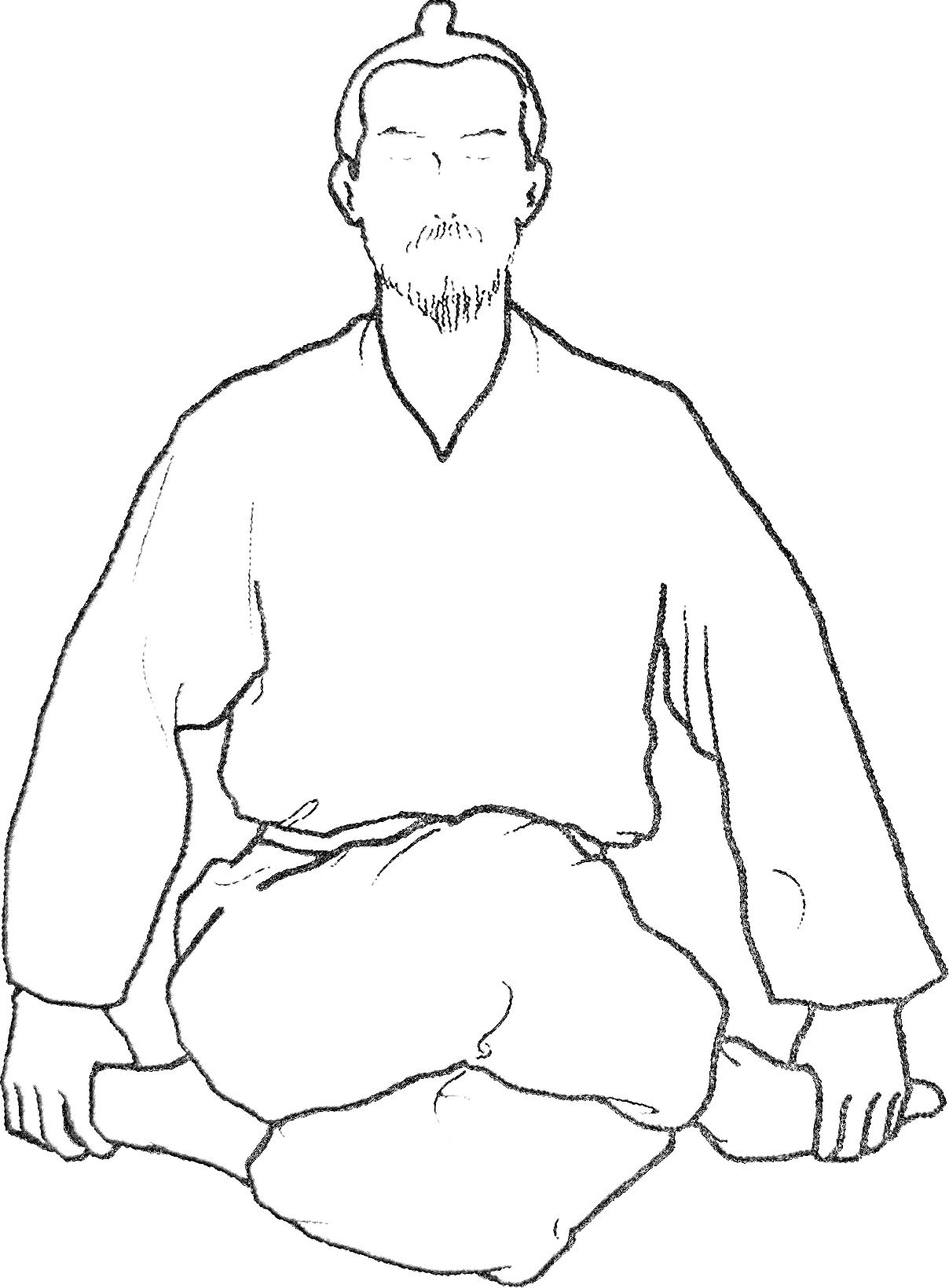First do the practice under an instructor guidance. Do not practice SunDo by yourself before that. It is recommended to practice by yourself, in your own private space, only after you attend a workshop, retreat or local practice center.
Arrive at the practice center 10 minutes before class begins. Calm your heart and do some light exercise. When practice begins, bow to salute, recite the precepts (Hoon) and gather your heart. Then begin the energy-blood circulation method (warm-up exercise). The warm-up exercise prepare the body and mind for the optimum condition for going into haeng – gong practice (postures breathing).
Warm-Up – energy – blood circulation method
The purpose of Warm-Up is to activate the whole energetic system in the human body. The exercises were created to open up the meridians, as to increase the energy flows. This will allow the harmonizing process to develop in a natural way. There are 60 exercises that takes about 15 mines. The Warm-Up Part is the same for all practice levels.
 According to Eastern medicine, our body is a meridians system, which is directly connected with the blood circulation and the muscles and fascias. A person can be very flexible and strong at the same time. When the muscle have a chronic tension (which feels like a constant weakness), it mens that the energy does not reach some those parts of the body. At the same time, it means there is a weak supply with oxygen and blood. This is the starting point of an illness.
According to Eastern medicine, our body is a meridians system, which is directly connected with the blood circulation and the muscles and fascias. A person can be very flexible and strong at the same time. When the muscle have a chronic tension (which feels like a constant weakness), it mens that the energy does not reach some those parts of the body. At the same time, it means there is a weak supply with oxygen and blood. This is the starting point of an illness.
SunDo practice increases flexibility, balance and health. It involves the whole body parts, muscles, tendons, joints and glandes, helping them to properly function. Also the body receives enough oxygen and the blood circulates the whole body.
SunDo Postures with breathing – Haeng – gong
 Turn off the lights, lie down and relax. Listen to the Don-In-Doh-Song (introductory music). Then practice Haeng – gong listening the Sundojoo (chant) rhythm while doing the breathing practice.
Turn off the lights, lie down and relax. Listen to the Don-In-Doh-Song (introductory music). Then practice Haeng – gong listening the Sundojoo (chant) rhythm while doing the breathing practice.
Posturile se fac ținând concentrarea pe respirația în abdomenul inferior, menținand pozițiile speciale ale corpului. Melodia ține un anumit ritm. Acest ritm reglează durata unei inspirații și a unei expirații, precum și schimbarea atitudinii în timpul desfășurării acestor exerciții. Se combină respirația profundă cu tensiunea care se formează în timpul unei posturi. Astfel se creează o concentrare foarte bună și se ajunge la o stare de calm.
There are total of 438 postures. You will gain energy in the lower Tancheon by doing the various postures and circulating the accumulated energy. Eventually you will master the circulation of energy and gain a high state of awareness.
Each level of Sundo practice has over 20 types of postures. The postures are practiced while doing Tancheon breathing. This part takes about 40 minutes.
În sistemul nostru energetic, abdomenul este ca un rezervor de energie. Cea mai mare cantitate de energie pe care o primim de la mamă, vine la noi prin cordonul ombilical. Această energie este proiectată pentru creșterea omului, însă în timp aceasta ajută la punerea în aplicare a posibilităților de creație. De obicei temerile, durerea emoțională și alte sentimente se suprapun peste această energie.
 Settling exercises – energy – blood circulation method
Settling exercises – energy – blood circulation method
The energy – blood circulation method (settling exercise) is done after Haeng – gong. The settling exercises enhance the practice by creating a condition of smooth energy – blood circulation. There are more than 40 exercises. Practitioners at all levels do the same exercises and it takes about 20 minutes.
You can also practice Ki-hwa-bups (Method of circulating the inner energy through the whole body) such as Hwa-joong-bup, Bo-wwon-gum, Oh-haeng-bup and so on according to your evel of mastery. The Ki-shin-bup generates, reinforces and harmonizes energy in the six yin organs and six yang organs according to the Five Element formation principle (Five Element cosmological cycle). Jung-gahl-doh, the first stage of Sundo, follows the Five Element formation principle.


Jung-gahl-doh, the first stage of Sundo, follows the Five Element formation principle. Su-bup (water) reinforces the kidneys and bladder by supplying energy to their meridians. Hwa-bup (fire) reinforces the heart and the small intestine by supplying energy to their meridians. Mok-bup (wood) reinforces liver and gallbladder. Keum-bup (metal) supplies energy to the lungs and the large intestine. To-bup (earth) lets the enrgy flow to the sleep and stomach. In each sequence the yin organ motion (posture) is done first and the yang organ motion (posture) is done second. Practitioners over the level of Jin-gi danbup do Chun-hwa-bup. Chun-hwa-bup follows the Five elements’ creation principle (Five Elements mutual life principle)
